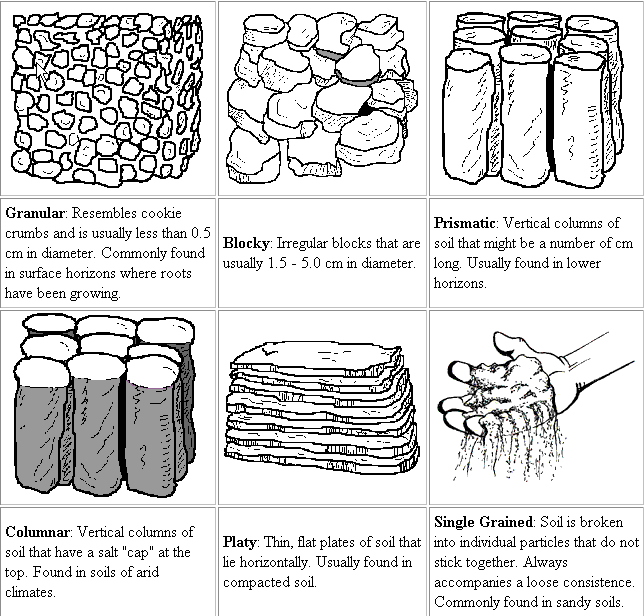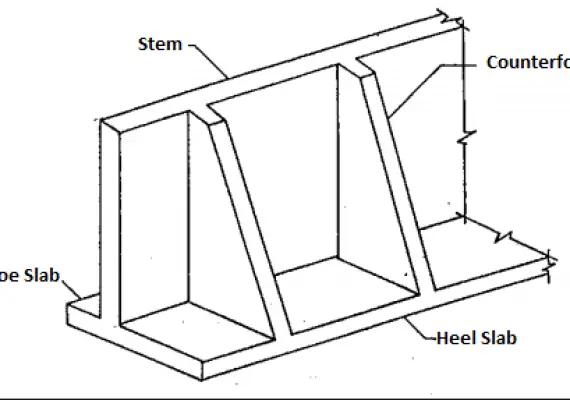What is Soil Structure? Types of Soil Structure | Soil Structure Diagram | Expansive Soil Foundation
What is Soil Structure?| What Exactly Are Expansive Soils | Why Is Soil Compaction a Problem?
What is Soil Structure?
Soil structure refers to the way individual soil particles (sand, silt, and clay) assemble together to form aggregates (or peds). These soil particles are cemented together by chemical, physical, and biological processes to form layers. The aggregates vary in size and shape from small crumbs through to large blocks.
Soil texture is a classification method used both in the laboratory or field to determine soil classes based on their physical texture. Soil texture can be established by using qualitative ways like the texture of the soil by feeling, and quantitative ways like hydrometer instruments.
Soil Aggregation
Aggregation process of soil particles can happen in different ways and patterns, therefore will result in different soil structures. Water circulation in the soil varies significantly depending on the structure of the soil
Importance of Soil Structure
Soil structure is much more than every particle of silt, sand, and clay. Typically, the soil should be one-half solid materials including sand, silt, clay, nutrients, minerals, organic materials, and biological life and one-half pore space that contains water and the other half being air space
Soil is vital for human wellbeing because over 95% of human and animal food production relies on the soil. Normally, a ‘good’ agricultural soil is thought to consist of around 50% solids, 25% air, and 25% water, but this will vary according to soil type.
Soil is also home to a quarter of all terrestrial species.
Soil plays a crucial role in storing carbon and water, which helps mitigate climate change and prevent flooding.
Different Types of Soil Structure
Soil structure determines the water and air penetration through the soil and vastly influences the ability of the soil to allow and treat wastewater.
It describes the arrangement of the solid components of the soil and of the pore space found between them.
Soil structure is determined by how small soil granules clump, bind together, and the aggregate that results in the arrangement of soil pores between them. Soil structure influences air and water movement, biological activity root growth. There are several different types of soil structure. It is inherently a dynamic and complex system that is affected by different factors.
Soil structure is classified by type (shape), class (size) of peds, and grade (strength of cohesion) of aggregates.
Prismatic Soil Structure
The individual units are defined by vertical sides that range from flat to rounded. Vertically, units are noticeably longer, and the faces are often castings or molds of contiguous units.
The vertices are angular or subrounded, while the prism tops are unclear and usually flat.
Columnar Soil Structure
These units are similar to prisms in that they are delimited by flat or slightly rounded vertical faces. In contrast to prisms, the tops of columns are distinct and typically rounded
Blocky Soil Structure
The units are either blocklike or polyhedral. They are surrounded by flat or slightly rounded surfaces that are castings of surrounding peds’ faces. Blocky structural units are often roughly equidimensional but grade to prisms and plates.
If the faces cross at relatively acute angles, the structure is described as angular blocky; if the faces are a mixture of rounded and plane faces, and the corners are largely rounded, the structure is described as subangular blocky.
Platy Soil Structure
The units are flat and platelike in shape. They are usually horizontally orientated.
Granular Soil Structure
The units are spherical or polyhedral in shape. They’re surrounded by curved or highly irregular faces that aren’t castings of neighboring peds.
Wedge Soil Structure
The units are roughly circular in shape, with interlocking lenses terminating at acute angles. They are frequently surrounded by little slickensides.
Lenticular Soil Structure
The units are made up of overlapping lenses that run parallel to the soil surface. They are thickest in the center and thinnest at the edges.
Lenticular structure is frequently associated with moist soils, texture classes high in silt or extremely fine sand (e.g., silt loam), and a high frost action potential.
Soil Structure Diagram
The size, shape, and strength of aggregates determine how porous the soil structure is and how easily water, air, and roots penetrate through soil layers.
Soil structure is most usefully described in terms of grade (degree of aggregation), class (average size), and type of aggregates (form). In some soils, different kinds of aggregates may be found together and they are then described separately.
The grade of structure can be defined as the degree of aggregation, expressing the differential between adhesion between aggregates and cohesion within aggregates.
As these properties vary with the moisture content of the soil, the grade of the structure should be determined when the soil is neither extremely moist nor dry. There are four major grades of structure;
Structureless has no observable aggregation or no definite orderly arrangement of natural lines of weakness.
Massive structure (coherent) where the entire soil horizon appears cemented in one great mass.
Single-grain structure (non-coherent) where the individual soil particles show no tendency to cling together, such as pure sand.
A weak structure is poorly formed from indistinct aggregates that can barely be observed in place. When removed from the profile, the soil material breaks down into a mixture of very few entire aggregates, many broken aggregates, and much-unaggregated material.
Why Is Soil Important in Construction?
Soil is used directly to manufacture building materials like cement and brick, as well as indirectly to grow the plants that are needed to make building materials.
The physical qualities of soil influence its strength and stability of structures. A well-structured soil is more stable.
Soils can make or break a construction process. Engineers and soil scientists test soil strength to determine how easily a soil changes shape or shifts and whether it can support the weight of structures.
Keep an eye out for soil texture and clay kind. Building on the unsuitable soil, or without footings on unstable clay or sand, results in cracked foundations, leaking landfills, bursting dams, and flooded sports fields.
Soil Problems in Construction
In the realm of geotechnical engineering, construction on soft ground presents a significant problem.
Given the poor shear strength and high compressibility of this soil, many engineering problems such as slope instability, bearing capacity failure, or excessive settlement could develop either during or after the building process.
Expansive soil or clay is one of the more problematic soils, causing damage to many civil engineering buildings due to its swelling and shrinking potential when exposed to water.
Because of their tendency to expand and shrink, expansive soils behave differently from other types of soil.
Expansive soils can pose the following challenges in constructions or construction projects due to their swelling and shrinking behavior:
- Lightweight constructions, such as sidewalks and roads, sustain structural damage.
- Building lifting, basement damage, and building settling
- Wall and ceiling cracks
- Pipeline and other public utility damage
- Lateral movement of foundations and retaining walls caused by vertical wall pressure
- Loss of residual shear strength, resulting in slope instability, etc.
Before beginning any construction work, it is critical to check for the presence of expansive soil and to implement an appropriate remedy. If the condition was not addressed before to building, postconstruction remediation of expansive soil may be required in some circumstances.
Certain soil-related issues necessitate guidance from the field of civil engineering. These problems include frost heave, soil shrinkage, soil swelling, soil heave, and soil subsidence. In civil engineering, an in-depth examination of soil is carried out.
How Soil Structure Deteriorates
Factors that can deteriorate or destroy soil structure include, for example:
- Compaction
- Cultivation
- Removal of vegetation
- Moving and handling of soil
All soil is vulnerable to erosion. And during the construction process, the soil becomes loose and loses its stability. To help decrease any problems caused by erosion, one method is limiting the space where the soil is moved around during the excavation process.
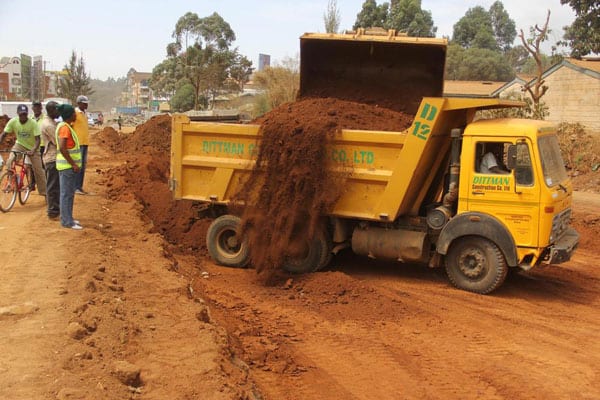
Why Is Soil Compaction a Problem?
A lack of pore space leads to a lack of drainage. When the soil becomes saturated with water, there is no place for oxygen, which inhibits plant growth.
Oxygen deficiency also hinders organisms that decompose organic debris, which is necessary for recycling nutrients and aerating the soil.
Water cannot percolate efficiently through compacted soil, forcing it to flow off the surface and produce erosion.
Very dense soil makes it difficult for plants to grow properly. Roots cannot penetrate the soil to obtain the nutrients, water, and structural support they require for survival.
Common Causes of Soil Compaction
Soil over-tilling
Over-tilling reduces tiny soil aggregates to single particles. The soil should have little clusters of particles linked together in pea-sized lumps.
Those little particles are broken down when an area is tilled several times. When the earth becomes saturated, it prevents water from passing through.
A mini-pond is formed, and when the earth dries, it mimics the skin of an alligator. This linear pattern of fractured soil prevents air and water from entering.
Tilling the soil accelerates up the breakdown of organic compounds, which prevents compaction.
It can also disrupt soil structure, specifically the arrangement of mineral particles in relation to pore space, if the soil is tilled while wet.
Over time, repeated tillage orients all soil particles in the same direction, resulting in the formation of a layer of compacted soil directly beneath the area being tilled.
Vehicles and pedestrian traffic.
Soil gets compacted in many home landscapes as a result of building development, repeated use of riding lawn mowers, or off-road parking of cars and leisure vehicles.
Pedestrian paths through garden beds and turf areas also contribute significantly to compaction.
Rain falls on barren soils.
Raindrops generate splash erosion, which disturbs the top layer of soil particles and results in the production of a thin surface crust that prevents water from reaching plant roots.
Natural phenomena
Natural processes can compact clay-rich soils, which are common in wetlands and river bottoms. Because individual clay particles are so minute, they are more prone to being closely packed together.
Types of Soil in Construction & How it Matter in Foundation of the House
Clay & Black Cotton Soil
Clay is an expansive soil, which means it expands when wet and shrinks when dry. These changes cause a great deal of pressure on foundations and can cause them to move up and down, and eventually crack. For this reason, clay is usually not a great soil to construct a home on.
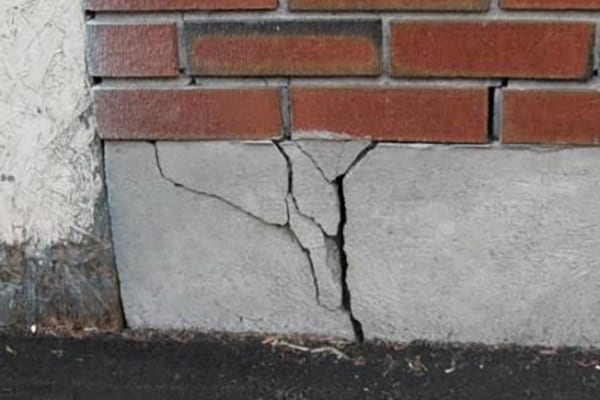
Peat Soil
Peat is a dark brown/black soil formed by decomposed organic material. It’s usually found near wetlands and is especially porous. Like clay, peat shrinks and expands depending on weather conditions and has a low bearing capacity, making it a poor support material.
Sand
When compacted with gravel and other materials, and does not retain water and therefore will not cause any structures above it to shift. However, over time, sand particles can lose their friction and be washed away, creating gaps beneath a foundation.
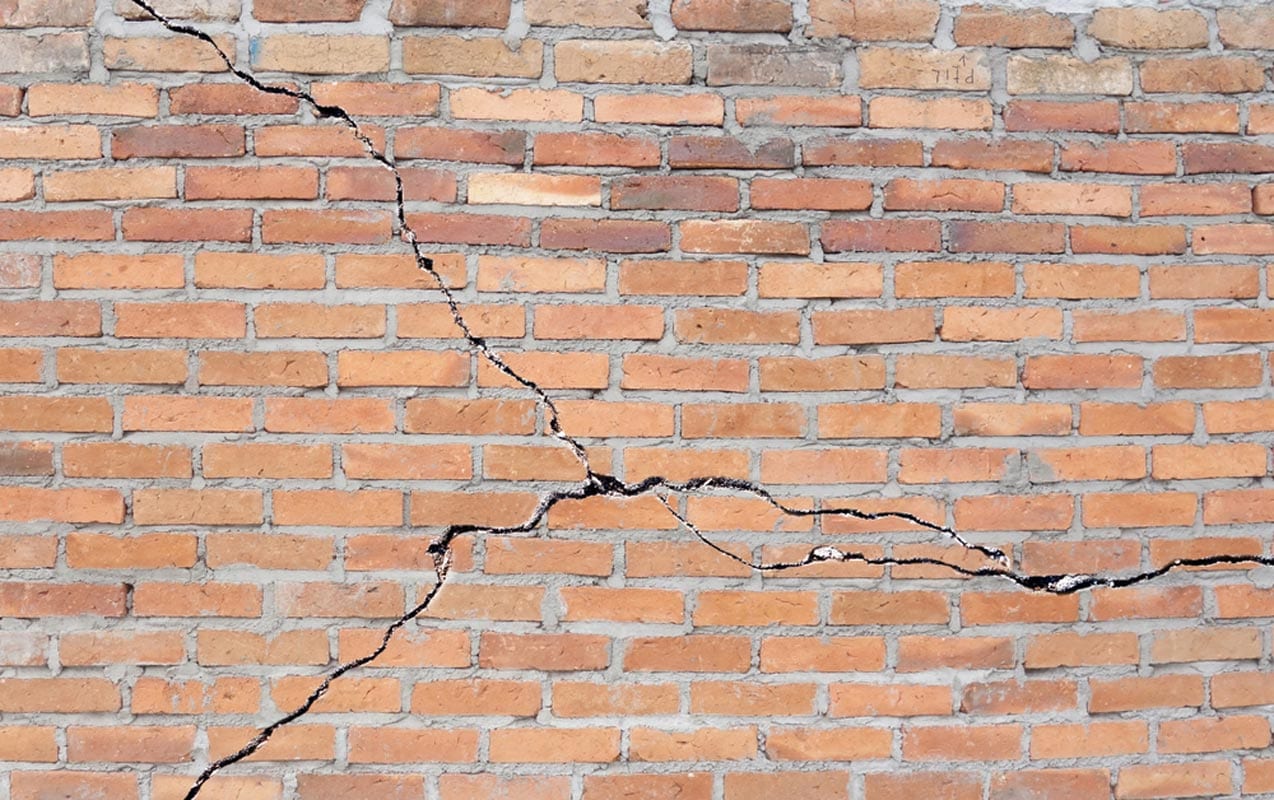
Rock
Varieties such as bedrock, limestone, and sandstone have exceptionally high bearing capacities, which make them suitable for supporting buildings and homes. It’s imperative that a rock surface is at a level before a foundation is constructed, otherwise, the foundation must be held into place with anchors.
Loam & Red Soil
Loam is an ideal surface for the foundation. Typically, loam is a combination of sand, silt, and clay, and is crumbly/soft to the touch. Loam handles moisture in a balanced way and will generally not expand or shrink enough to cause damage.
What Exactly Are Expansive Soils?
Expansive soils are those which expand when water is added and contract when it dries. Because of the constant fluctuation in soil volume, buildings built on this soil may shift unevenly and collapse.
Expansive soils cause $2.3 billion in damage to houses, other buildings, roads, pipelines, and other structures in the United States each year. This is more than double the combined damage from floods, hurricanes, tornadoes, and earthquakes.
Expansive soil is a widespread issue that causes significant damage to civil engineering structures. Expansive soil, also known as shrink-swell soil, is a typical cause of foundation issues.
Expansive foundation soils will “heave” and induce lifting of a building or other structure during periods of excessive precipitation.
Expansive soil will “collapse” and cause building settlement during periods of falling soil moisture. In any case, the consequences can be severe.
Expansive soil will also press against the vertical face of a foundation, basement, or retaining wall, causing lateral displacement.
Design of an Expansive Soil Foundation in Construction
Geotechnical ways to building on expansive soils. Removing potentially expansive soil and replacing it with a compacted fill of granular soils or non-expansive materials is a simple option where it is economically possible.
However, if the depth of the expansive soil is too deep to allow removal and replacement, or treatment, it is recommended to use drilled and under reamed caissons to circumvent the zone of expansive soil.
Shafts of such foundations should be reinforced to withstand the tensile forces transmitted to the shaft by friction or adhesion in the swelling materials.
Furthermore, the consequences of expansive soil can be reduced as follows:
- Construction should be scheduled during or immediately after a prolonged rainy period if major seasonal fluctuations in soil moisture are responsible for swelling. This will result in less volume change in the future.
- The processes of wetting and drying on the worksite have a significant impact on the construction consequences in expansive soils.
- Fluctuations such as groundwater table fluctuation, exceptional rainfall and ponding of water near foundations, humidity changes, or unusual drought may accelerate the expansion and contraction of soils. Furthermore, plumbing leaks, site drainage, and irrigation methods can generate moisture volume discrepancies, altering the behavior of expansive soils.
- Planting trees near structures built in locations with expansive soils may cause structural damage due to evapotranspiration loss, which causes soil shrinking. Plants that need a lot of water should be avoided. Because of the previously described reasons, care should be taken not to allow moisture content variation near the construction site.
- During the summer, a gentle watering of the ground around the building twice or three times per week may be beneficial. Heavy watering, on the other hand, should be avoided because it can saturate the foundations.
- To reduce surface water penetration, impervious blankets, rain gutters, and surface grading can be used around foundations.
- To mitigate the consequences of swelling soils, French drains (a gravel-filled trench with a perforated pipe at the bottom connected to a discharge point) and cut-off walls (a vertical barrier preventing soil moisture from traveling horizontally) may be installed.
- To reduce the swelling pressure of soils, foundation soils and backfill materials can be stabilized using lime and other chemicals. Lime and other calcium-based treatments do not work well on high-sulphate soils. Such soils, however, can be treated with silica fume, amorphous silica, fly ash, various forms of cation exchange products, enzyme acids, emulsions, polymers, and so on.
- Expansion joints should be made for concrete floor slabs laid directly on potentially expansive clays to allow the floor to move freely away from the structural frame. Similarly, grade beams should be reinforced with enough steel to withstand the horizontal and vertical thrust of expanding soils. To reduce swelling pressures, compressible joint filler or open blocks or boxes beneath grade beams can be given if possible.
- Placing the structure atop a piling system raised above the surface can help to reduce the swelling effect in some circumstances. Because this allows regular air circulation and evaporation beneath the building, and provided drainage is appropriately built, it will cause minimal disruption to the water content of swell-susceptible stratum.
- The split of the structure into units that may move independently of each other can be a realistic option for light structures. Differential heave across units puts no strain on the structure, and modest repairs may be all that is required.
The drill-hole lime and pressure-injected lime procedures are the most commonly used post-construction remedies to problems created by expanding soil that may impair structures.
Furthermore, drainage enhancement and membrane installation may be used to reduce swelling effects.
Excavation and replacement, electro-osmosis, mud jacking, and pavement overlays may also be done on roadways.
However, their efficiency is limited since they provide either localized or temporary solutions or necessitate large-scale site activities.

